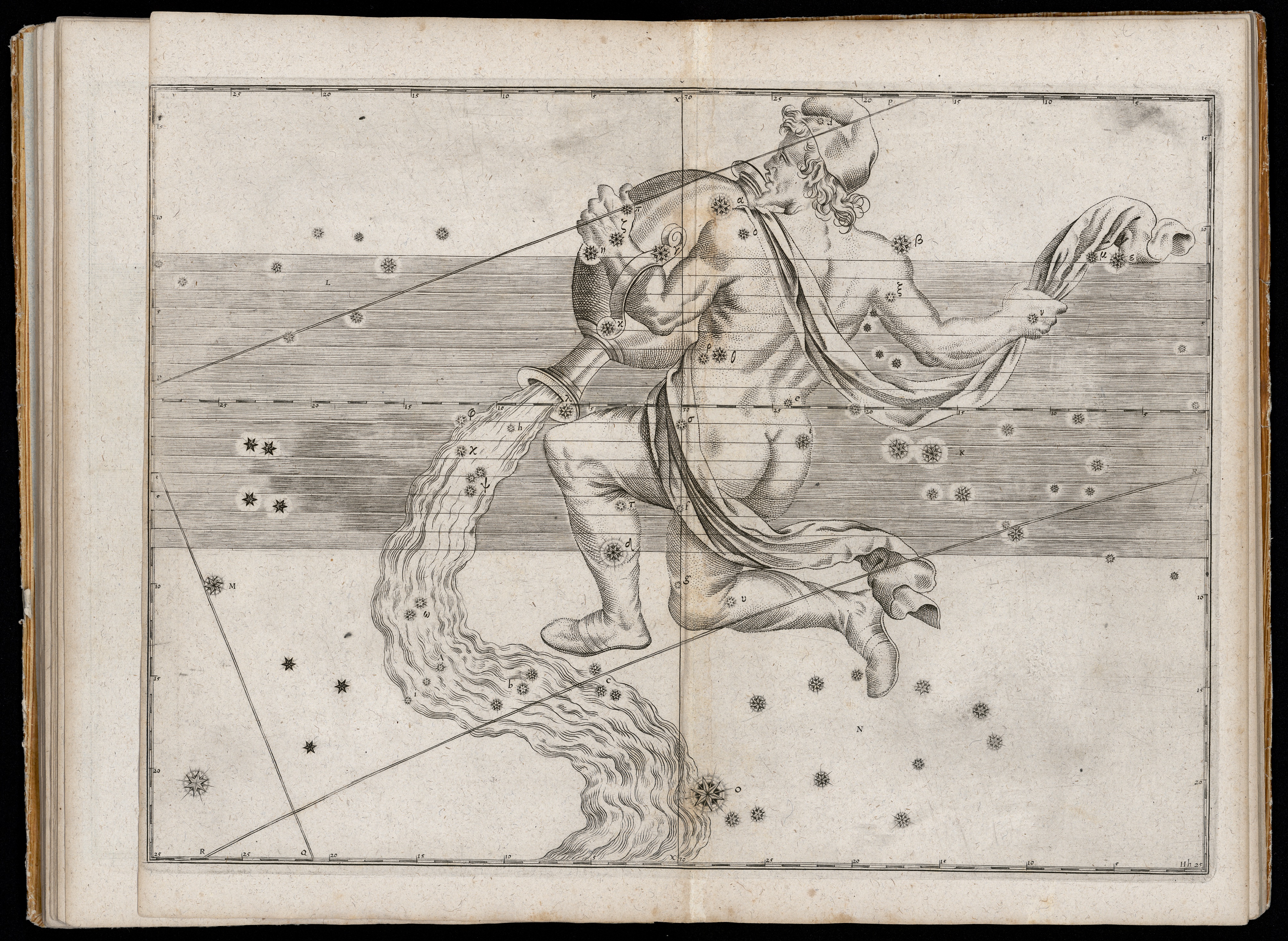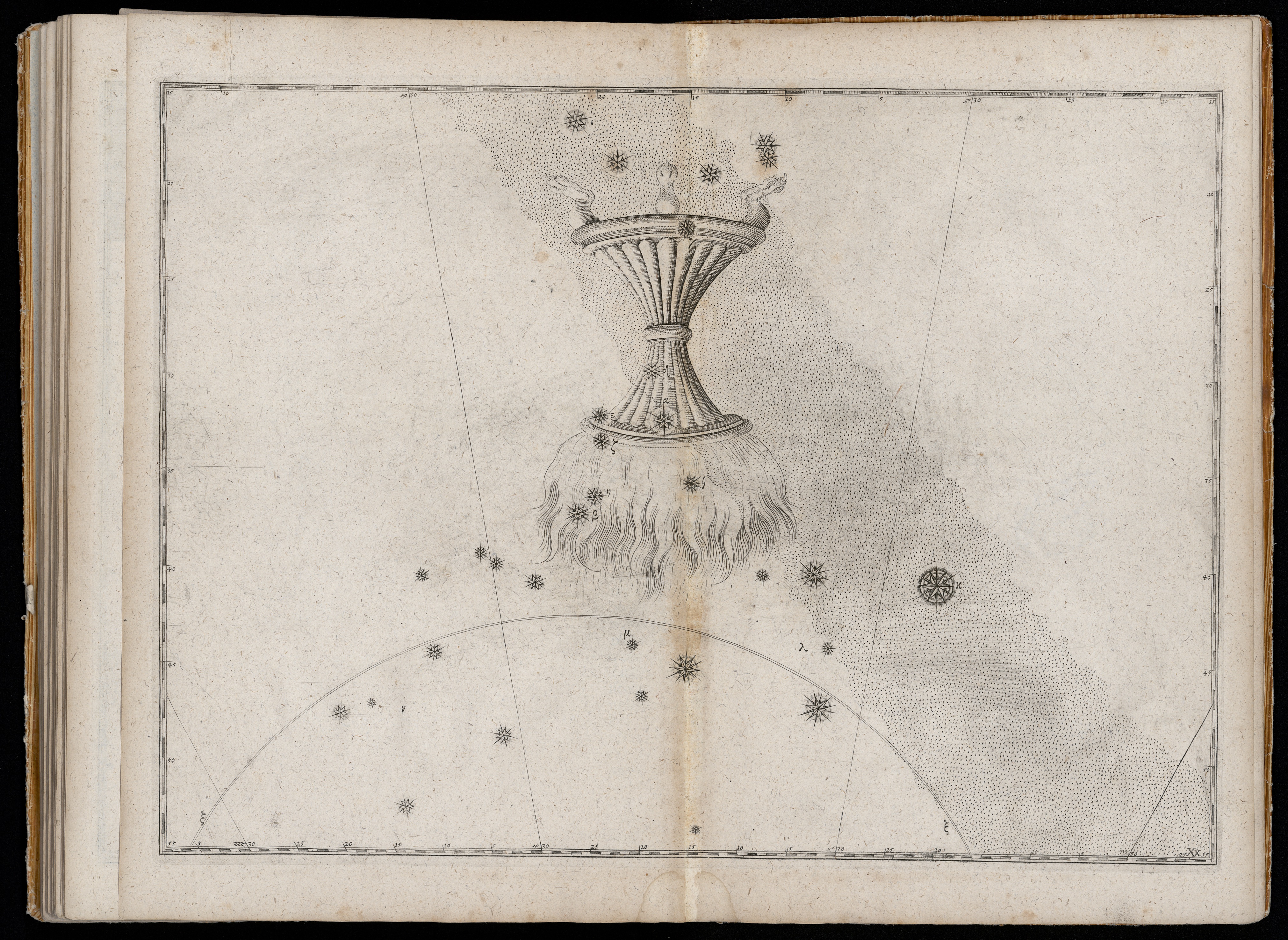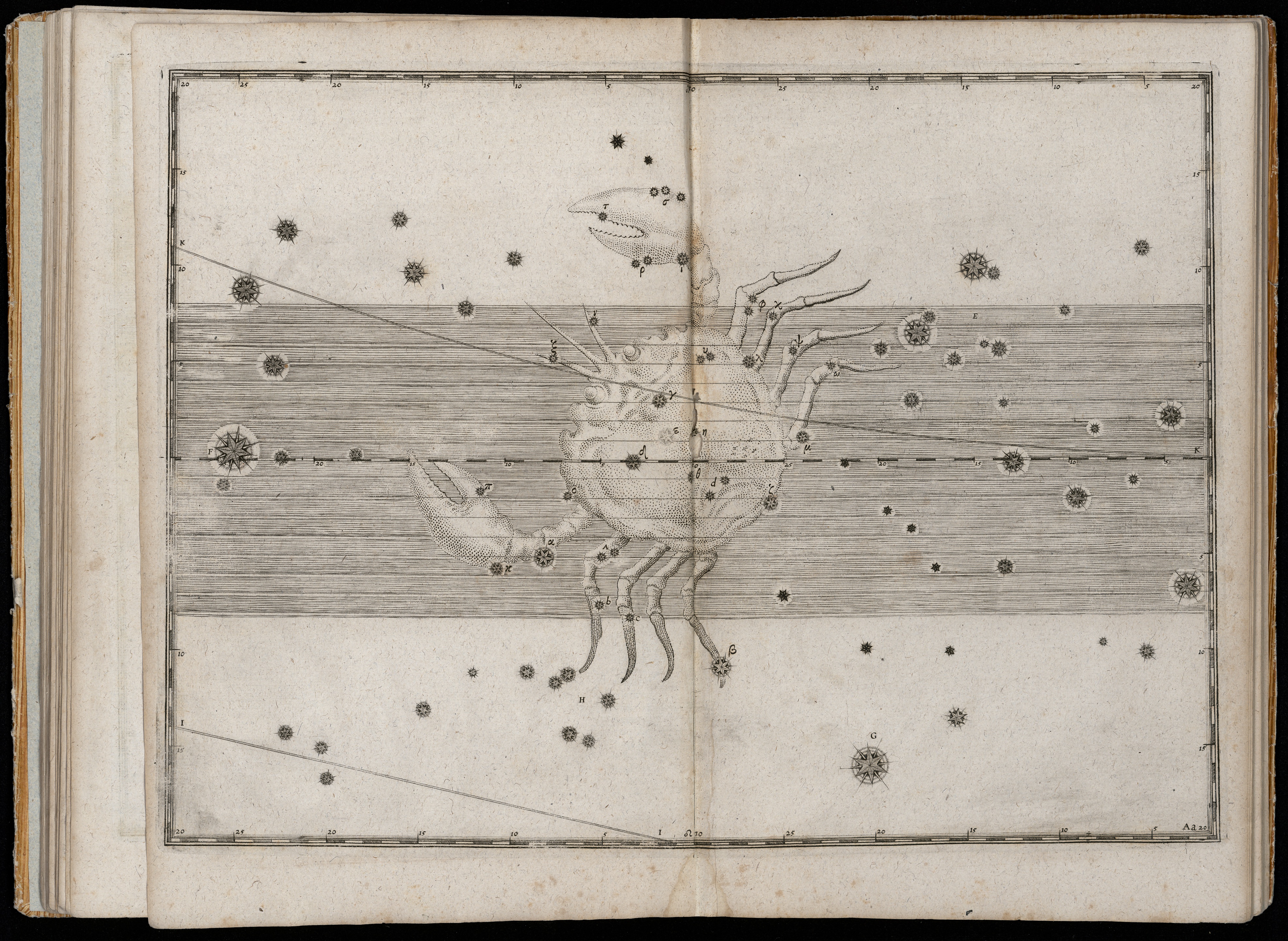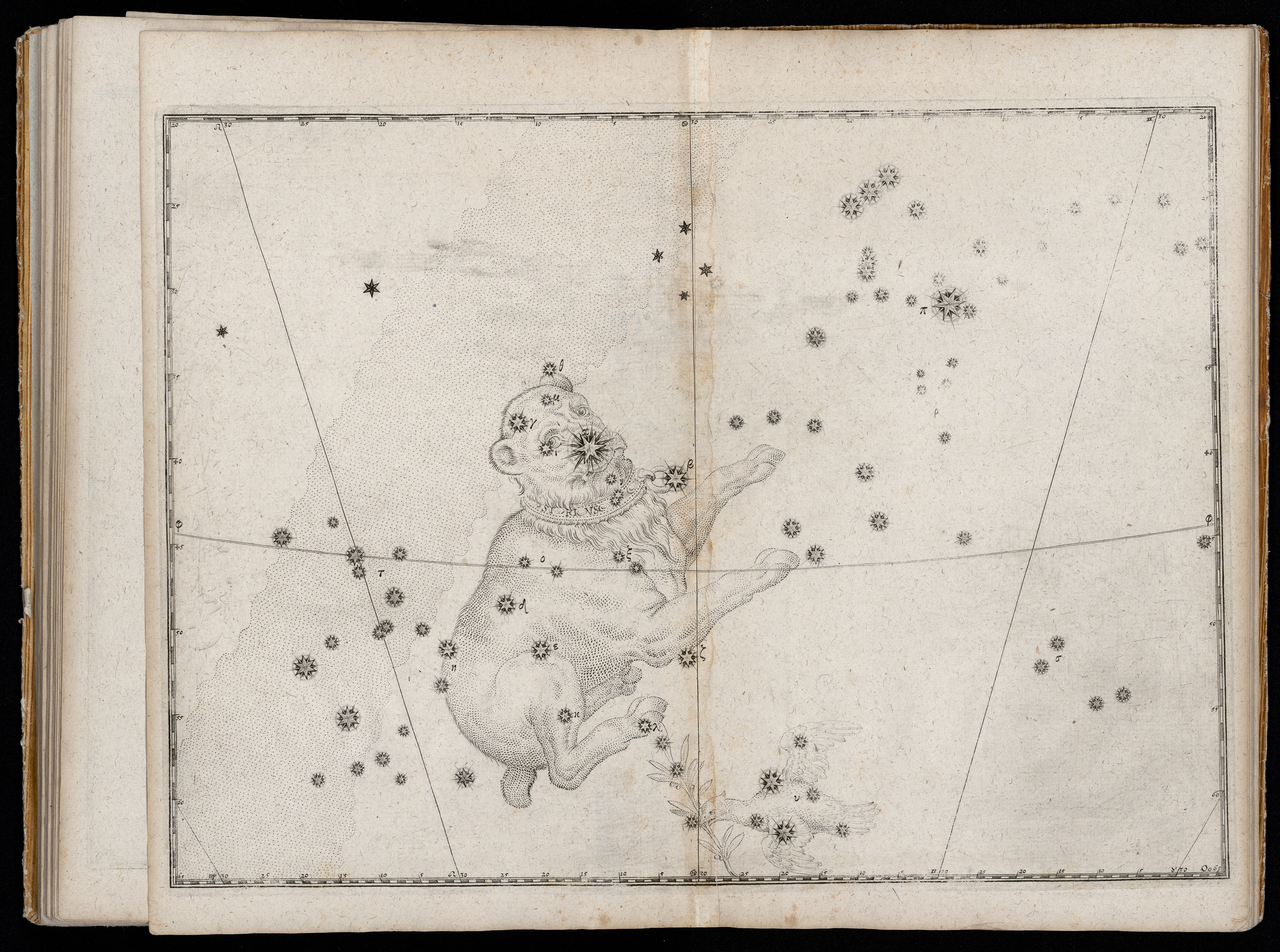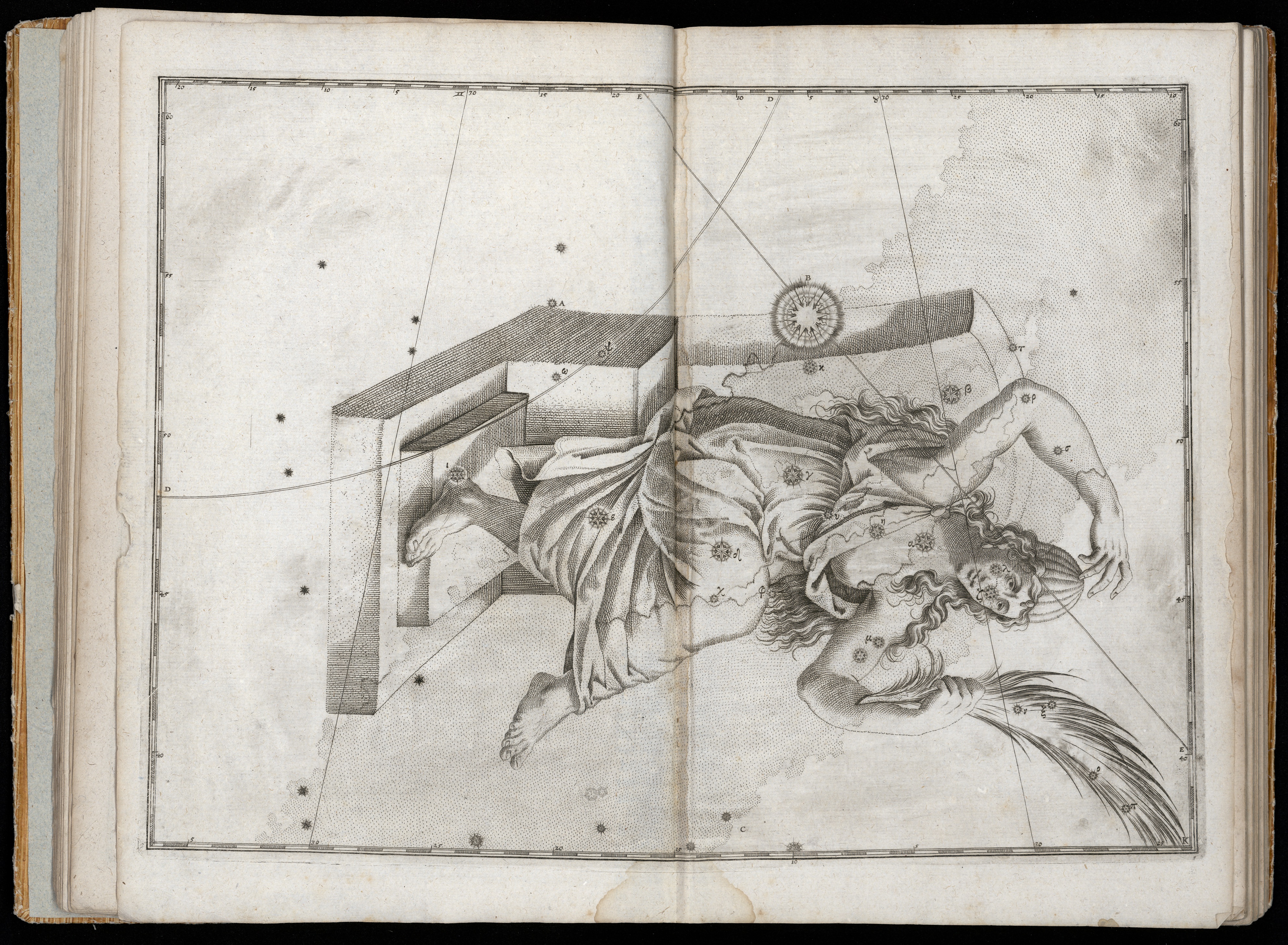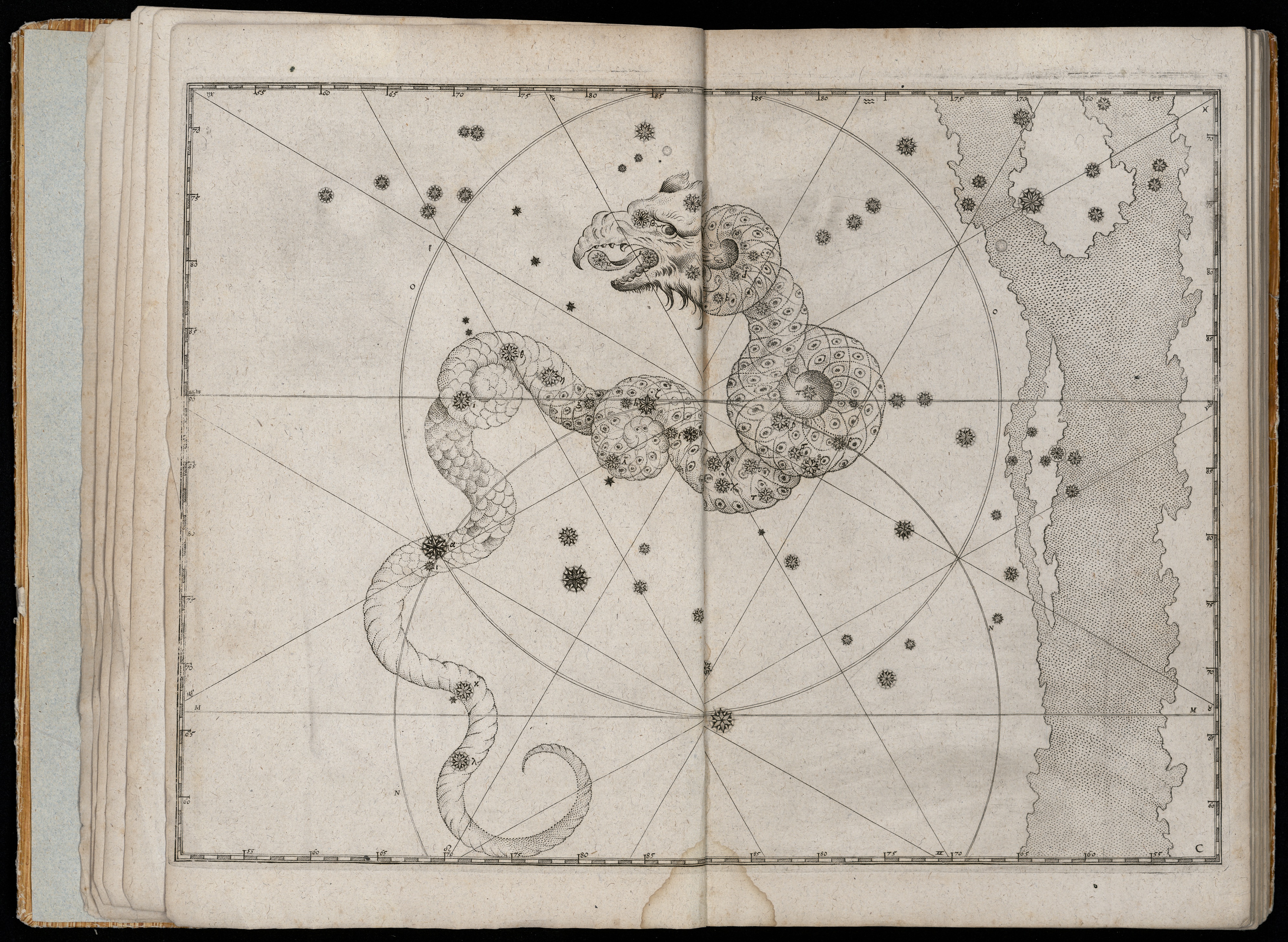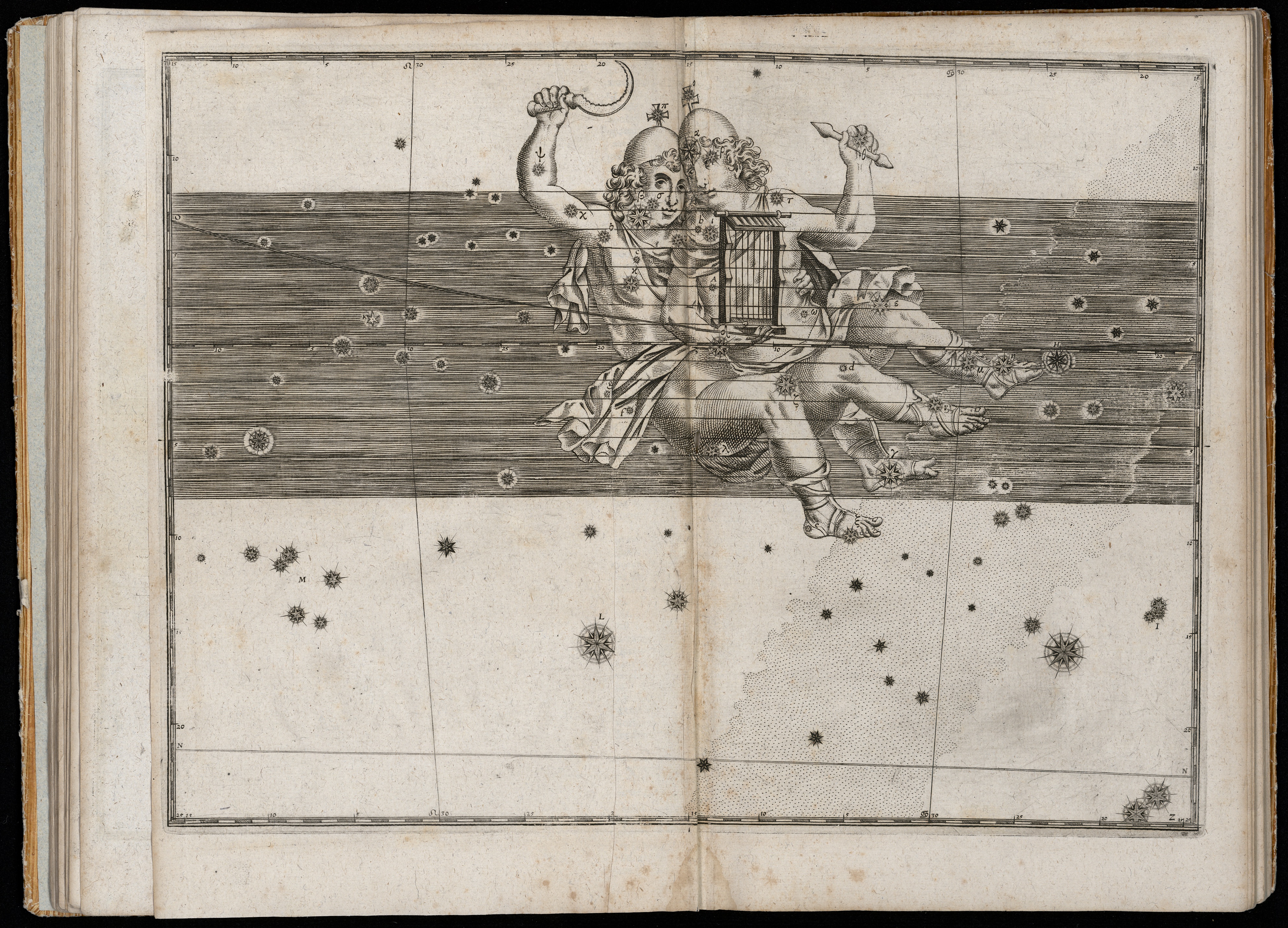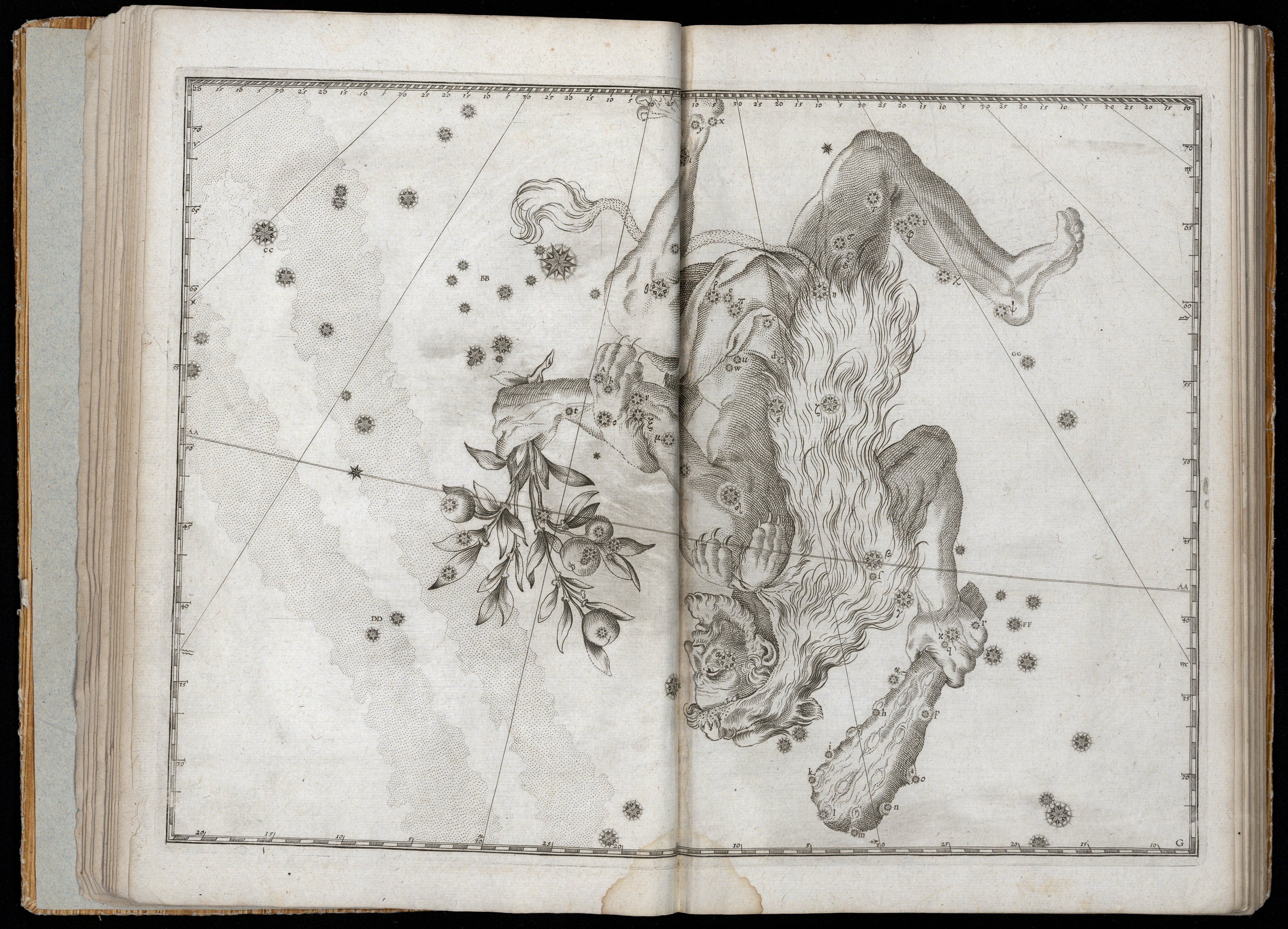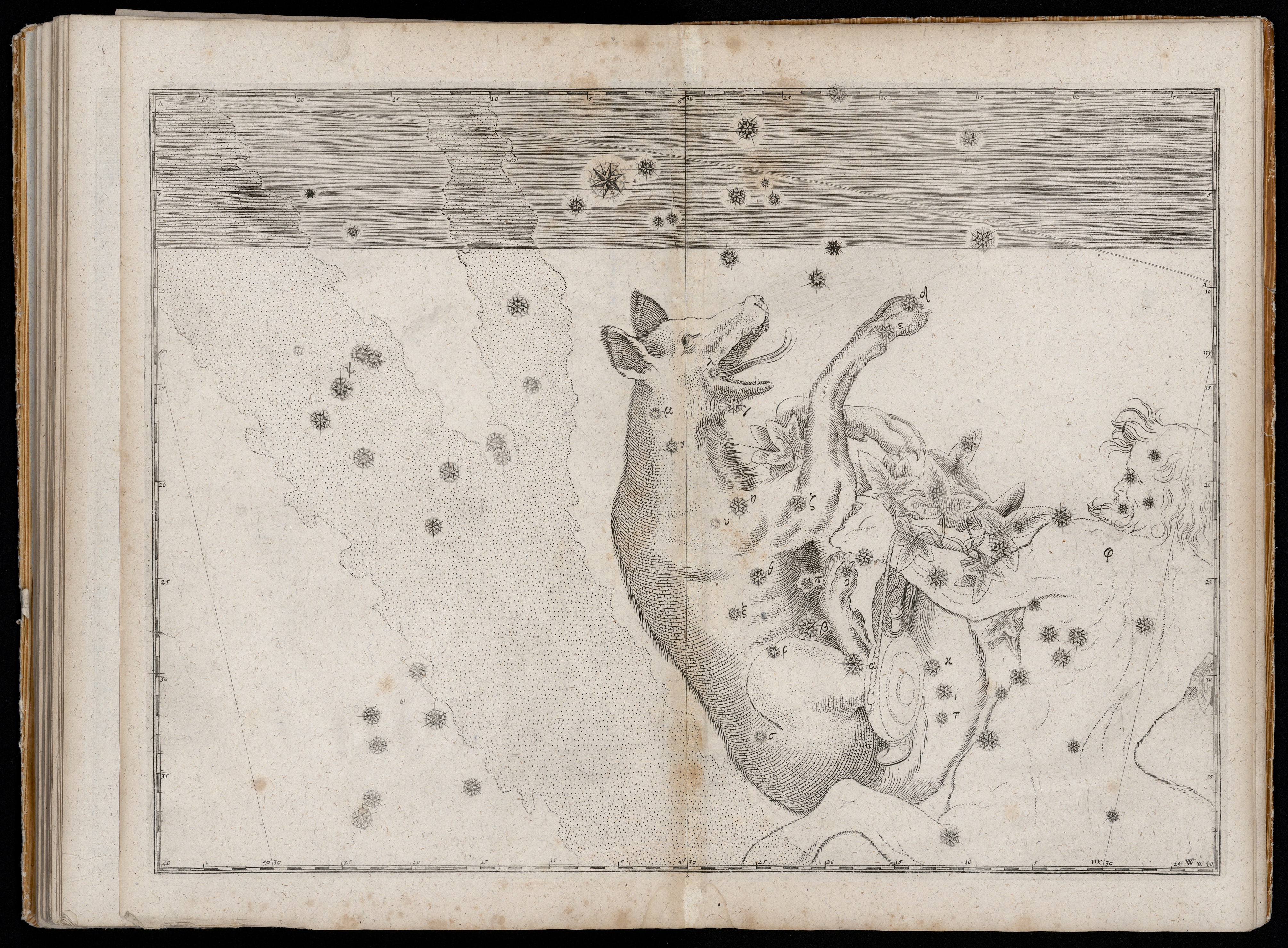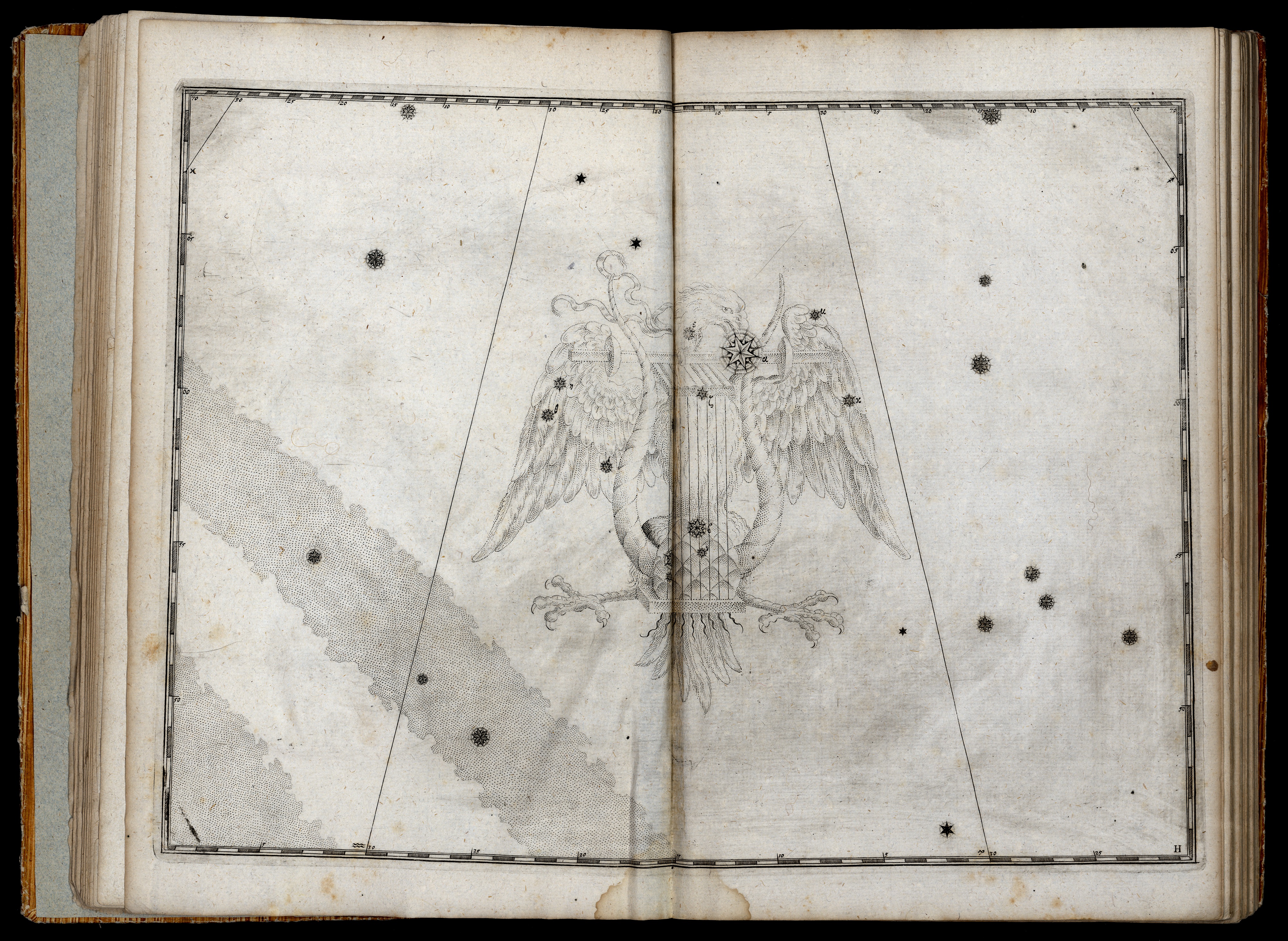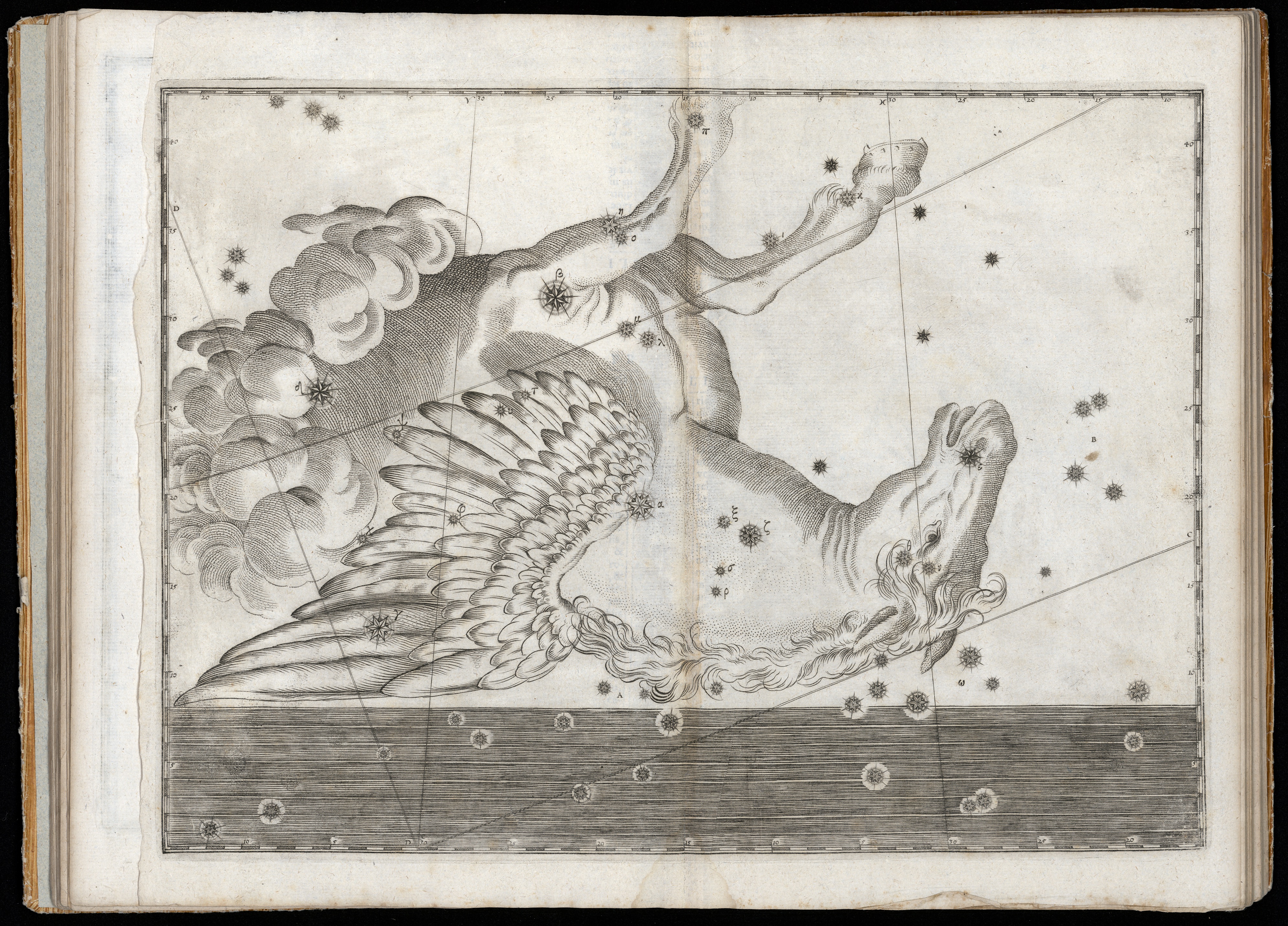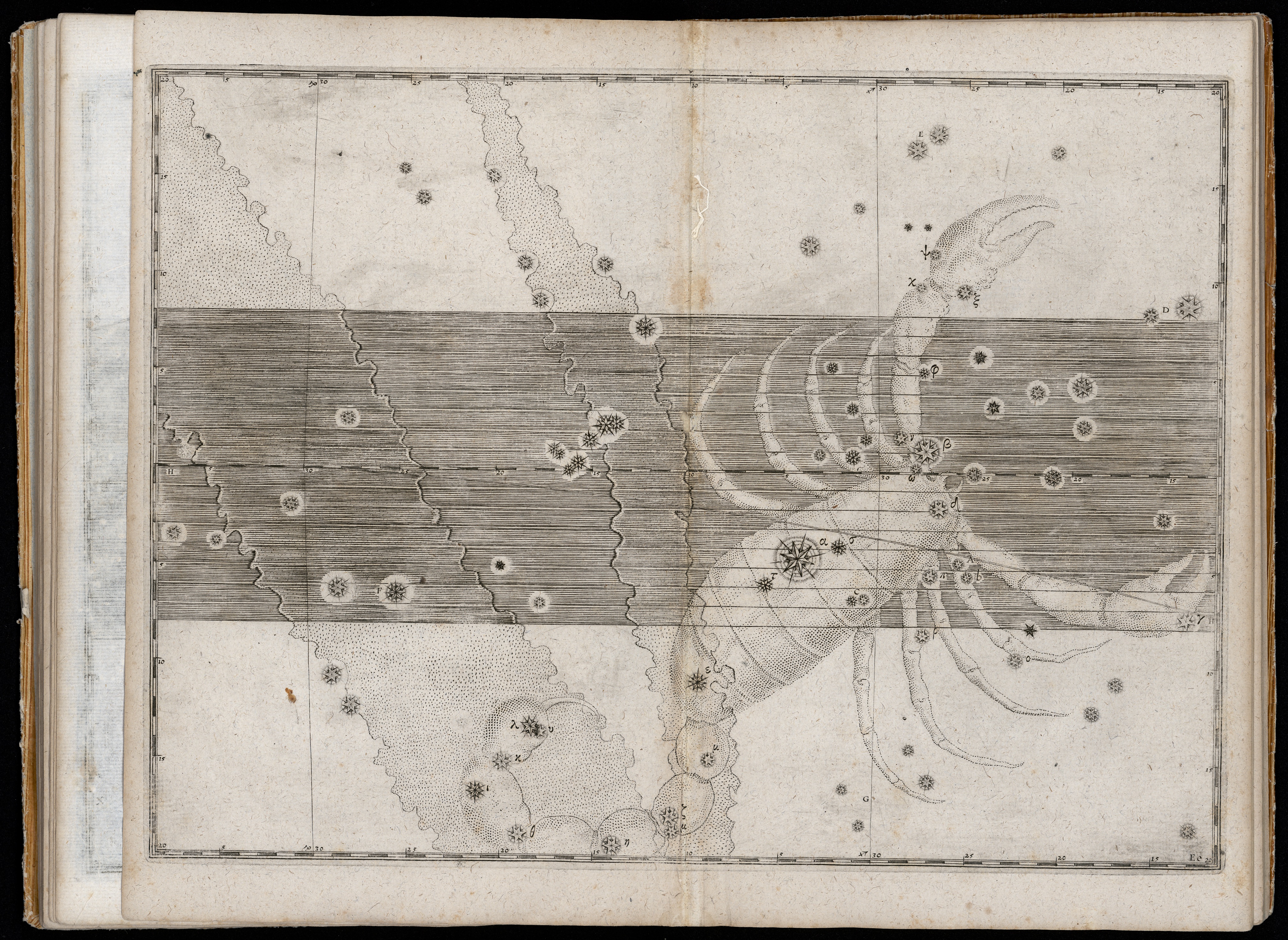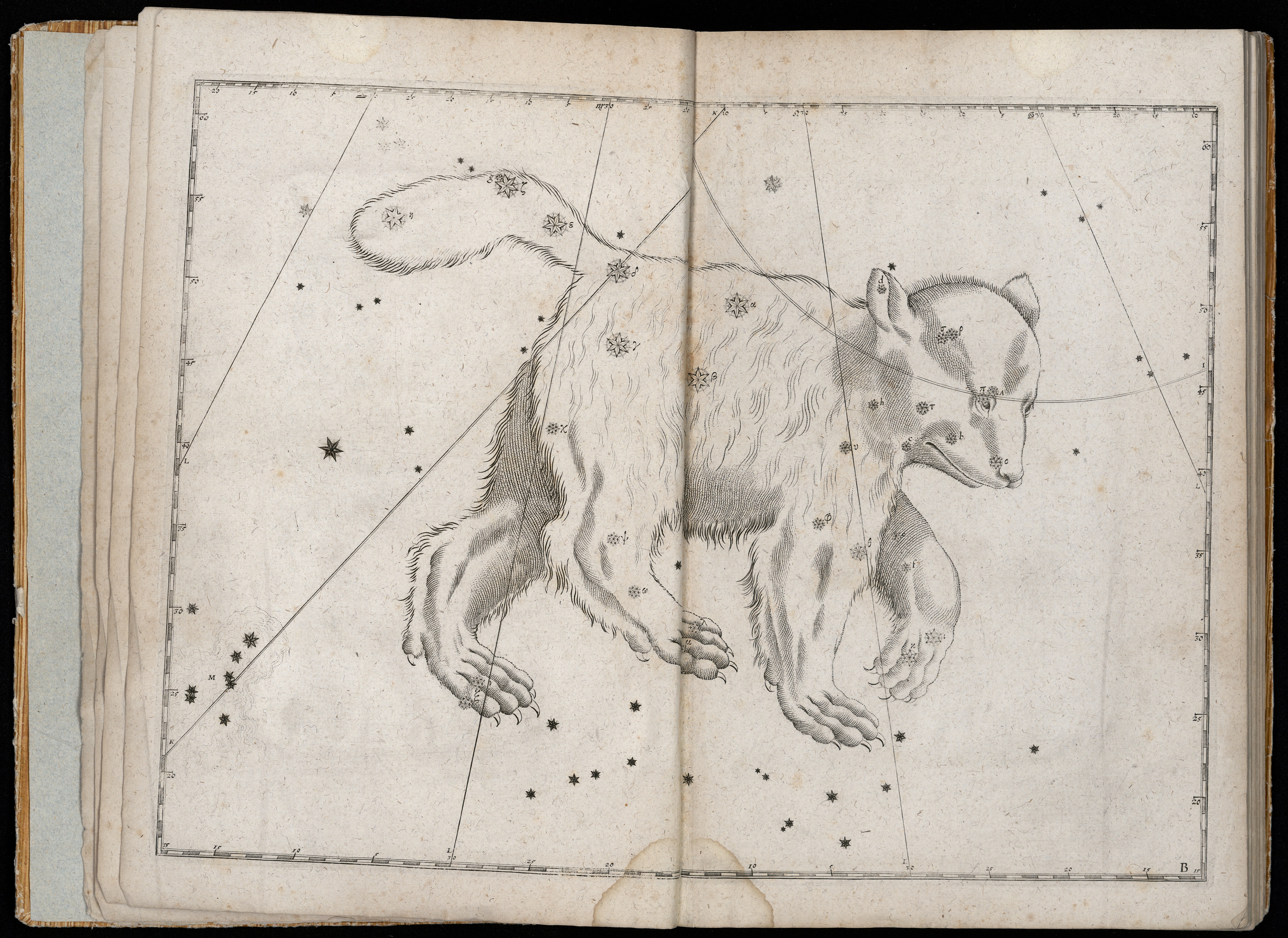Bayer, Uranometria
Image attribution
Source notes
First published in Augsburg in 1603, Bayer’s atlas consists of 51 double-page copperplate engravings. Bayer plotted his stars on a coordinate grid with one-degree intervals. His own star catalog, bound at the front of this volume, is based on the star positions of Tycho Brahe.
A dark horizontal band runs through all the constellations of the Zodiac, where the planets move against the background of fixed stars. Bayer depicted the band 8 degrees above and below the ecliptic, or annual path of the Sun. For example, in the constellation of Taurus the Bull, the ecliptic runs across the page in the center of the Zodiac horizontal band. The Milky Way angles down the left side.
Bayer labeled the stars with Greek letters, according to their apparent magnitude, so that the brightest star in Taurus, Aldebaran, is alpha-Tauri. This convention is still used today.
In contrast to Piccolomini, who omitted constellation figures in favor of scientific accuracy, Bayer superimposed constellation figures upon the star maps without compromising positional accuracy. These figures were artfully drawn by Alexander Mair. By fusing science and art, merging true star maps with innovative constellation figures, Bayer inaugurated the golden age of the celestial atlas.
Bayer’s atlas consists of 51 double-page copperplate engravings, including 2 planispheres, one star map for each of the 48 Ptolemaic constellations, and one map for 12 new constellations of the southern skies reported by 16th-century explorers (cf. the discussion of the southern stars plate in Ridpath Star Tales.)
The 1603 1st edition printed both sides of the leaves. In this later edition, the absence of printed text on the back side of each leaf prevented type from showing through on the atlas pages. Each double-page atlas leaf is attached to a strip of scrap paper that is bound in the gutter, so that the atlas image itself does not disappear down into the fold.
Bayer showed the star positions as they appear from the Earth (rather than from the outside, as on a celestial globe). However, he sometimes reversed the constellation figures, drawing them as seen from the back, which created potential confusion. For example, the star Rigel, described by Ptolemy as the left foot of Orion, became Orion’s right foot in Bayer’s figure, even though the star pattern remained the same as seen from Earth.
In the star catalog bound at the front of the OU copy, each star is listed along with its number from Ptolemy’s star catalog, and with the Greek letter assigned to it by Bayer to represent its brightness. Tycho’s star catalog included about 1,000 stars. Bayer incorporated many of these and added about 1,000 of his own, for a total of about 1,700 stars. A bright circle in the constellation of Cassiopeia shows where a nova appeared in 1572, described by Tycho Brahe.



